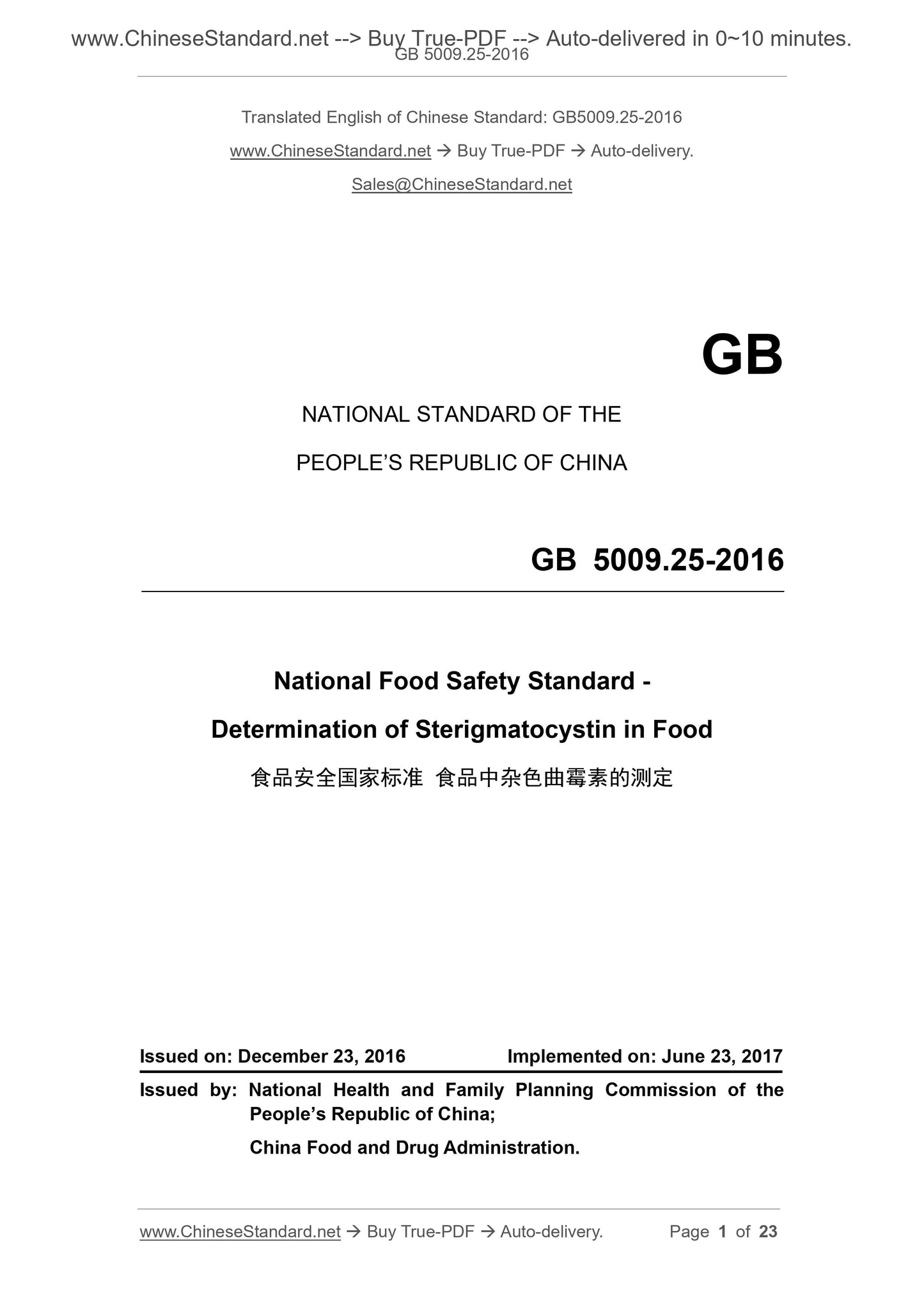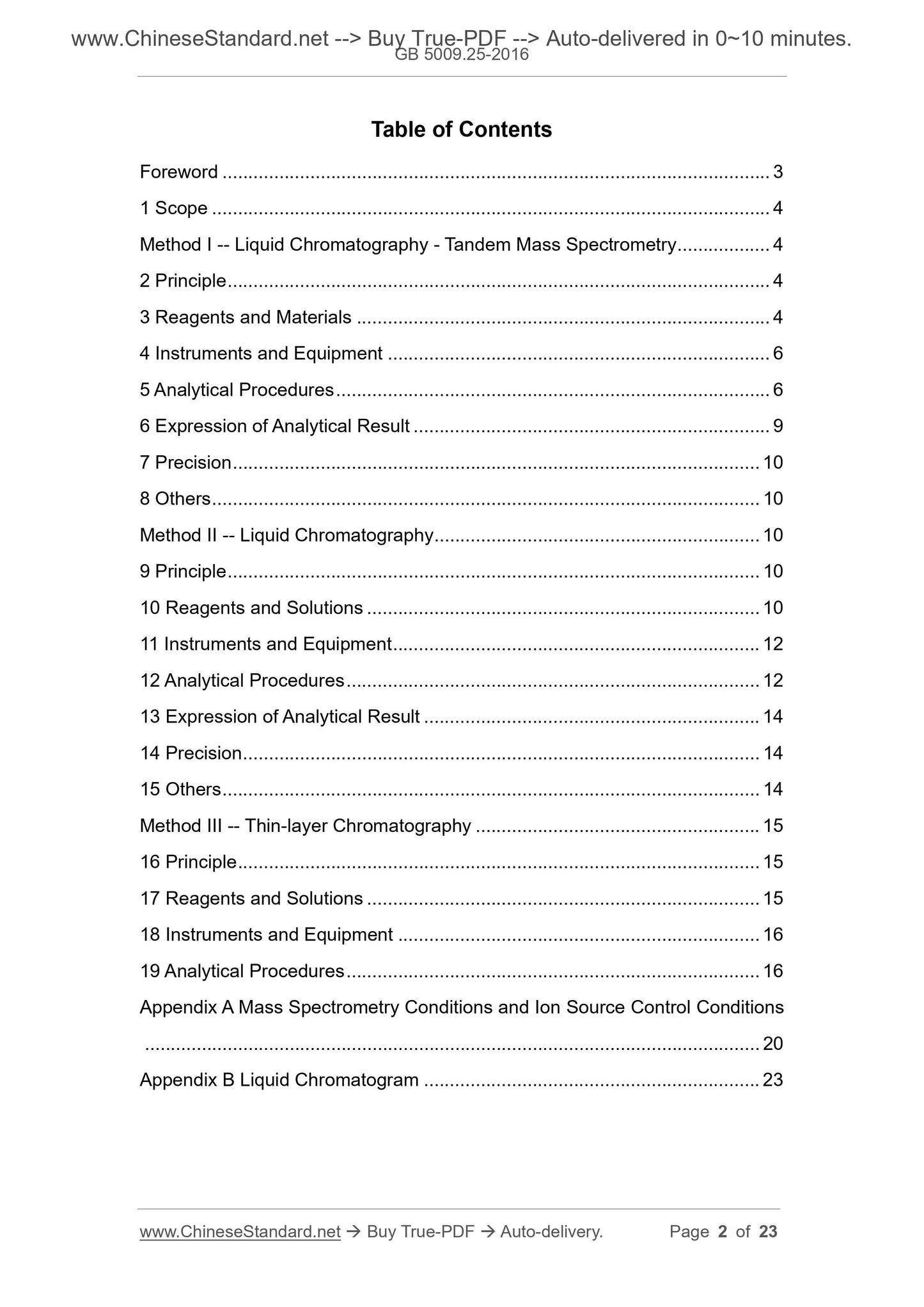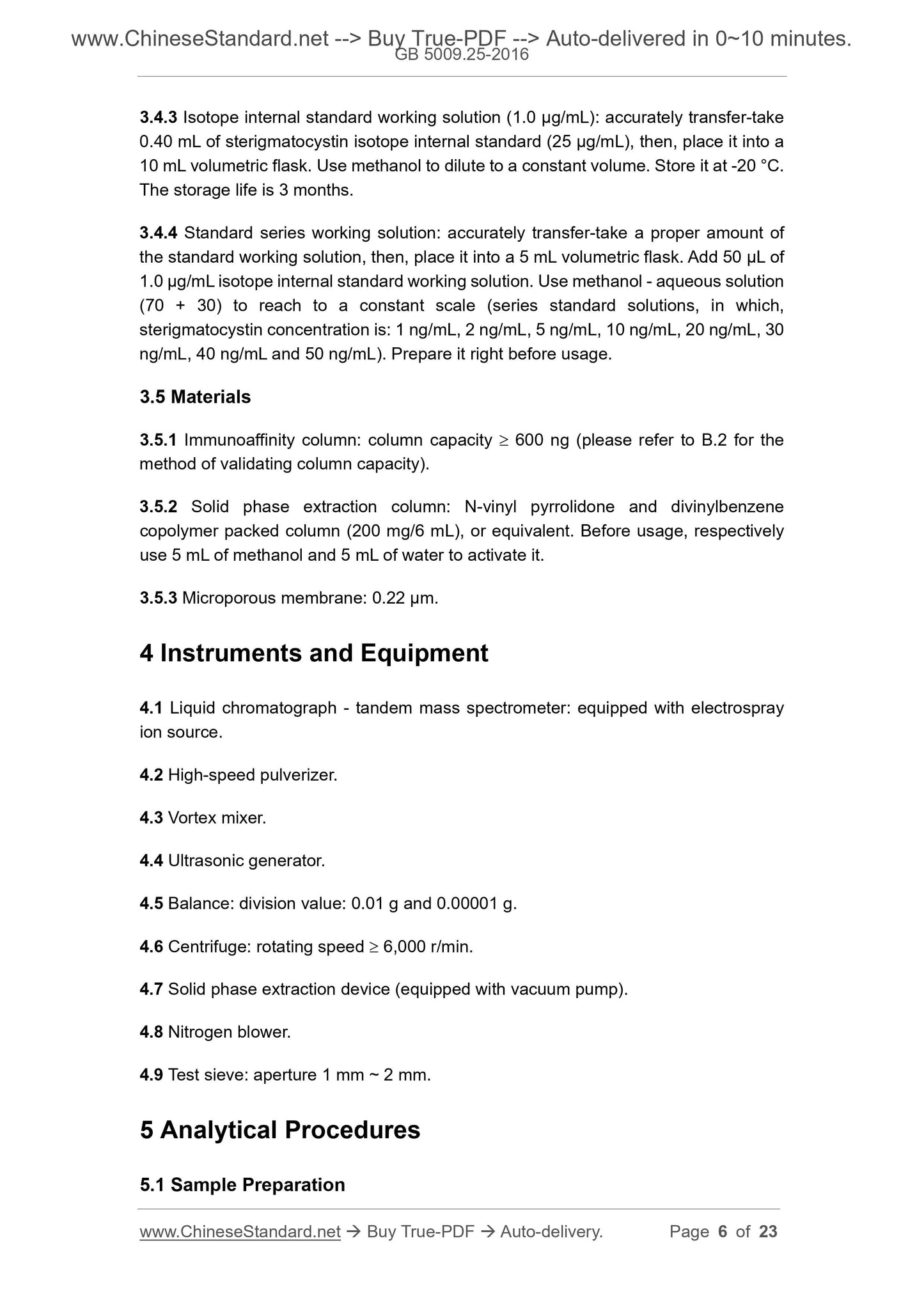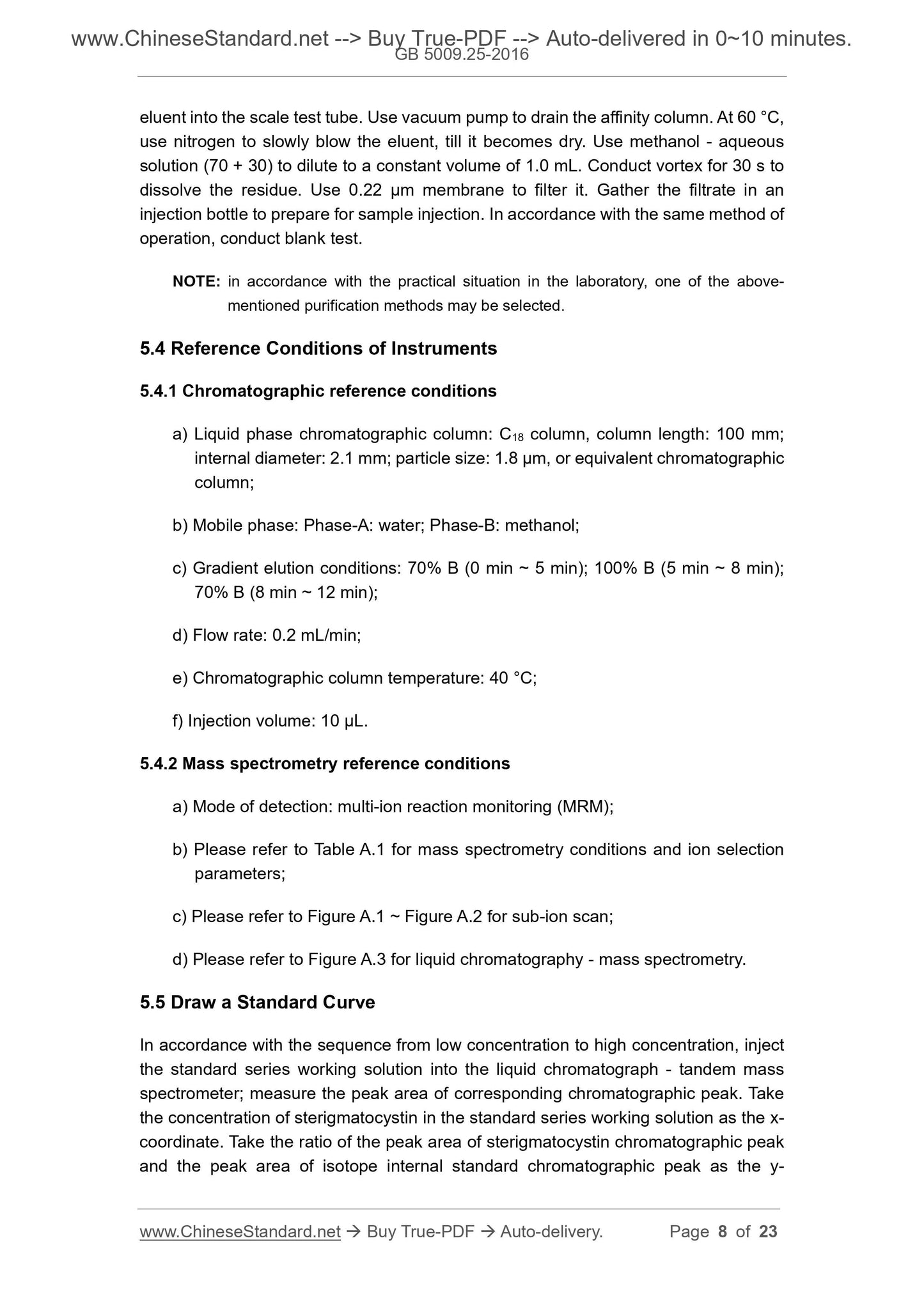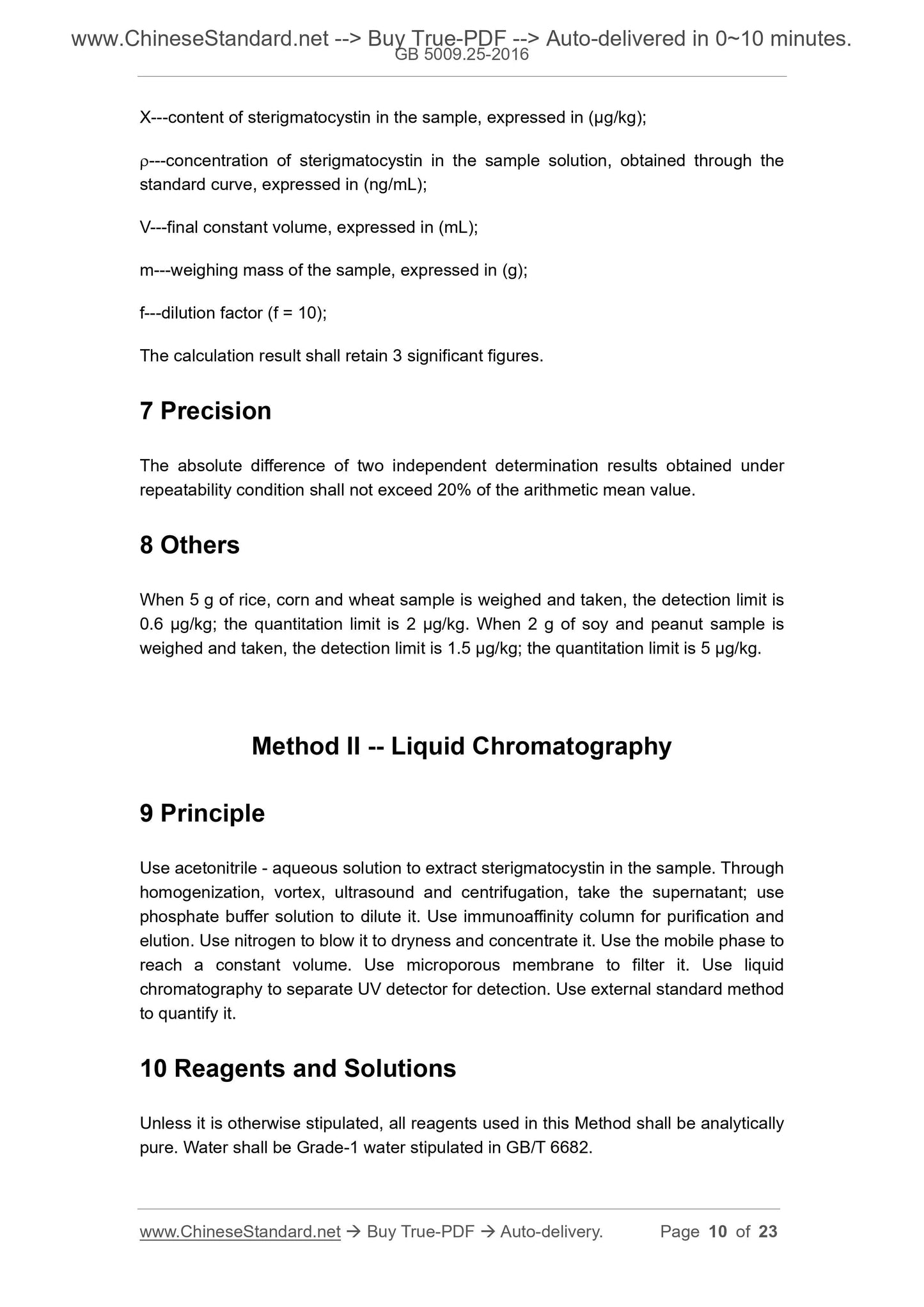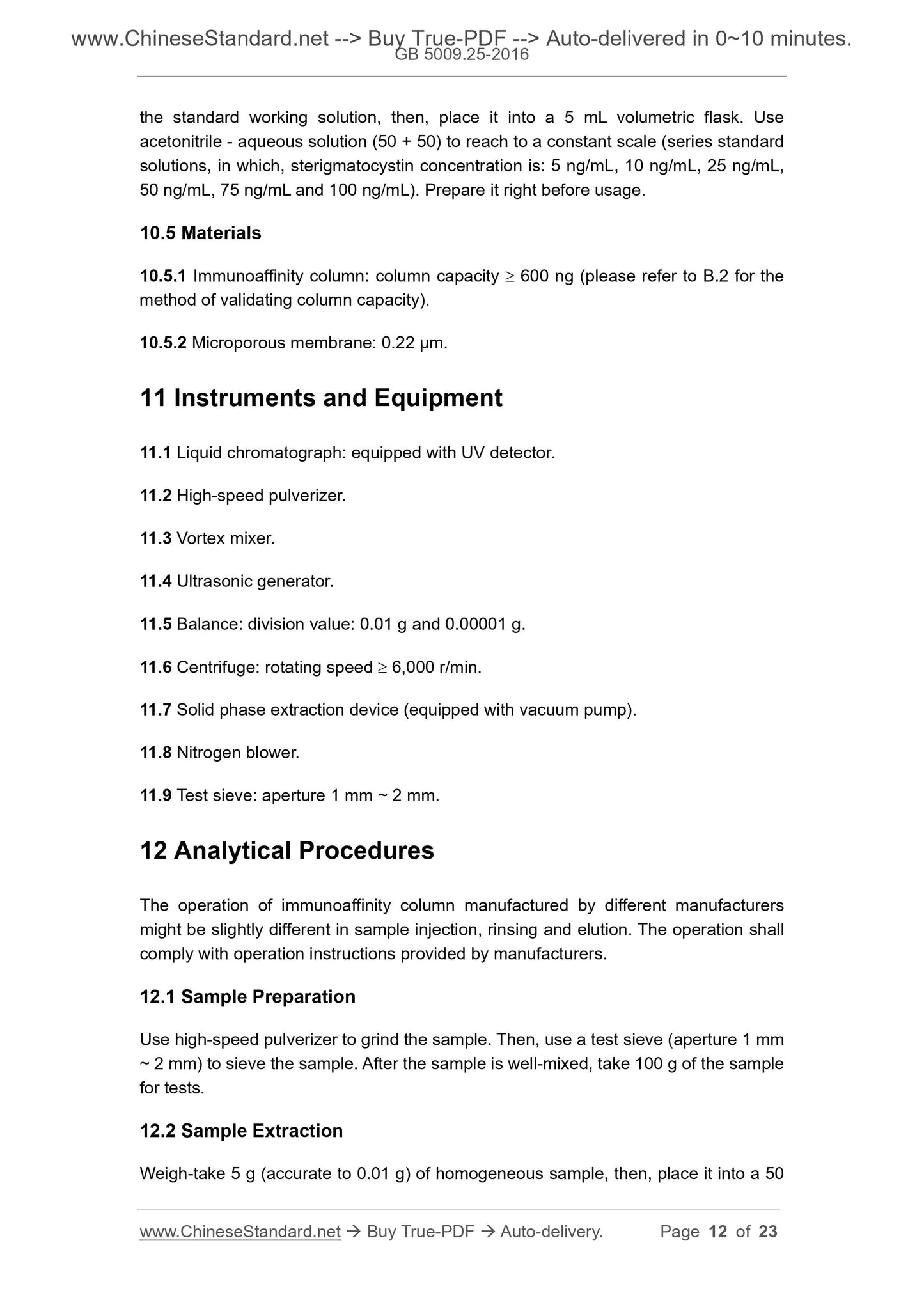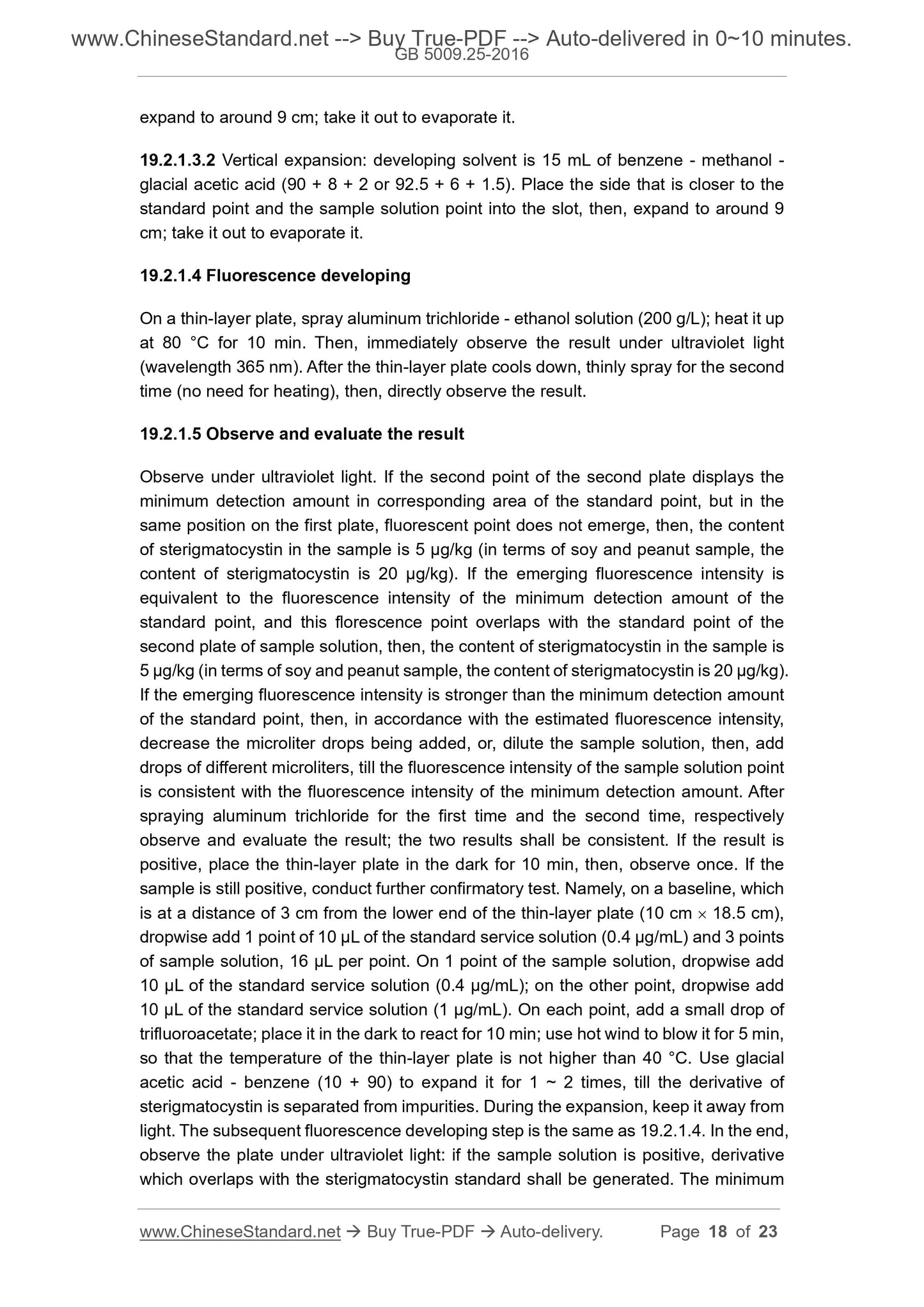1
/
of
10
www.ChineseStandard.us -- Field Test Asia Pte. Ltd.
GB 5009.25-2016 English PDF
GB 5009.25-2016 English PDF
Regular price
$150.00
Regular price
Sale price
$150.00
Unit price
/
per
Shipping calculated at checkout.
Couldn't load pickup availability
GB 5009.25-2016: National food safety standard - Determination of Sterigmatocystin in Food
Delivery: 9 seconds. Download (and Email) true-PDF + Invoice.Get Quotation: Click GB 5009.25-2016 (Self-service in 1-minute)
Newer / historical versions: GB 5009.25-2016
Preview True-PDF
Scope
This Standard specifies the methods for the determination of sterigmatocystin: liquidchromatography - tandem mass spectrometry and high-performance liquid
chromatography.
This Standard is applicable to the determination of sterigmatocystin in rice, corn, wheat,
soy and peanut.
Method I -- Liquid Chromatography - Tandem Mass
Spectrometry
Basic Data
| Standard ID | GB 5009.25-2016 (GB5009.25-2016) |
| Description (Translated English) | National food safety standard - Determination of Sterigmatocystin in Food |
| Sector / Industry | National Standard |
| Classification of Chinese Standard | C53 |
| Classification of International Standard | 67.040 |
| Word Count Estimation | 15,187 |
| Date of Issue | 2016-12-23 |
| Date of Implementation | 2017-06-23 |
| Older Standard (superseded by this standard) | GB/T 5009.25-2003; SN/T 2483-2010 |
| Regulation (derived from) | National Health and Family Planning Commission Notice No.17 of 2016 |
| Issuing agency(ies) | National Health and Family Planning Commission of the People's Republic of China, State Food and Drug Administration |
| Summary | This standard specifies the determination of hyaluronicin by liquid chromatography-tandem mass spectrometry and high performance liquid chromatography. This standard applies to the determination of impurity products in rice, corn, wheat, soybeans and peanuts. |
Share
